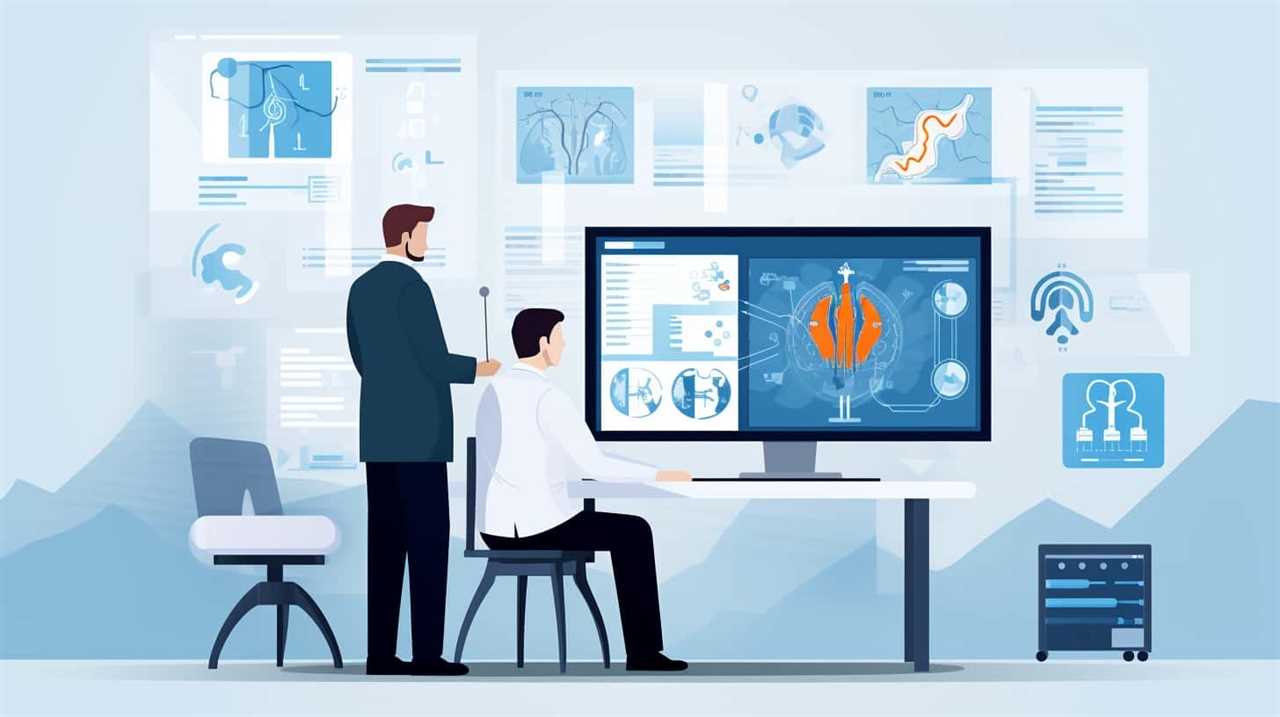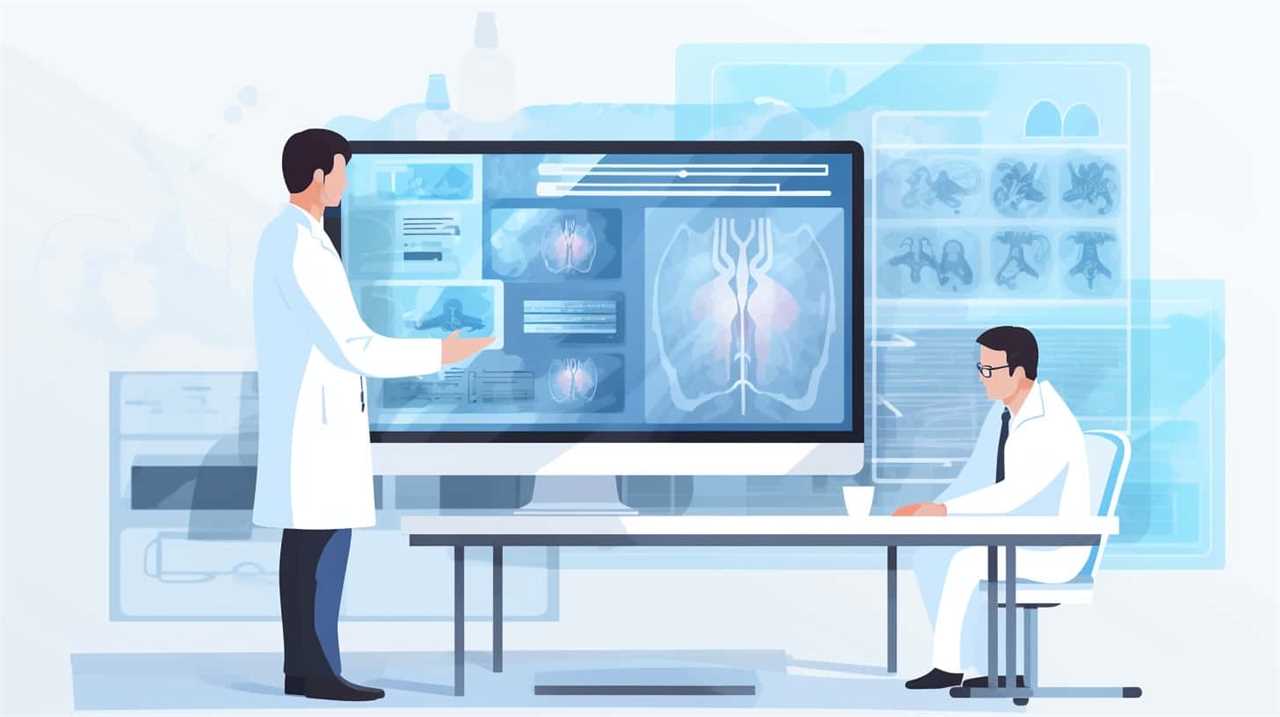In our quest for perfection in the field of AI-supported legal document review, we are dedicated to a systematic progression for improved effectiveness.
With this guide, we navigate the intricacies of selecting and training the right tools for the job.
By implementing cutting-edge techniques, we ensure optimal analysis of legal documents.
As we evaluate and fine-tune our legal AI model, we enhance its accuracy and effectiveness.
Join us as we unlock the potential of efficient legal AI document analysis.
Key Takeaways
- Gather and categorize all relevant legal documents for analysis
- Select appropriate document analysis tools based on accuracy, user-friendliness, and features
- Train the legal AI model using labeled datasets and adjust parameters to minimize errors
- Implement efficient document analysis techniques such as advanced machine learning algorithms, automated processing systems, OCR technology, and NLP techniques
- Evaluate and fine-tune the legal AI document analysis model using performance metrics, identifying gaps and errors, adjusting parameters, and employing techniques like data augmentation and transfer learning.

Preparing the Legal AI Document Analysis
To prepare the legal AI document analysis, we gather all relevant documents and categorize them based on their type and source. This step is crucial in streamlining the legal AI document analysis process and maximizing accuracy.
We carefully collect and organize the documents to ensure that no valuable information is overlooked. By categorizing them based on their type, such as contracts, court cases, or legal opinions, we can better understand the nature of the documents and tailor our analysis accordingly.
Additionally, categorizing the documents based on their source allows us to assess their reliability and credibility. This meticulous categorization and organization of documents sets the foundation for a comprehensive and efficient legal AI document analysis, ensuring that we extract the most accurate and relevant information for our clients.

Selecting the Appropriate Document Analysis Tools
Now, we proceed to evaluate and choose the suitable document analysis tools that will enhance our legal AI document analysis process. When comparing accuracy rates, it’s crucial to consider the tool’s ability to accurately extract and classify information from legal documents. Look for tools that have high accuracy rates and can handle complex legal language and terminology.
Evaluating user friendliness is another important factor to consider. The tool should have an intuitive interface that allows users to easily upload, analyze, and retrieve information from documents. It should also provide features such as document search, highlighting, and annotation for efficient document review.

Training the Legal AI Model for Document Classification
First, we’ll train the legal AI model for document classification. Training an AI model involves fine-tuning techniques to optimize its performance. To start, we need a labeled dataset that includes documents classified into relevant categories.
This dataset will serve as the foundation for training the model. We can utilize supervised learning algorithms, such as support vector machines or deep learning architectures like convolutional neural networks, to train the model.
The training process involves feeding the labeled dataset to the model and adjusting the model’s parameters iteratively, using techniques like backpropagation, to minimize classification errors. Regularization techniques can be employed to prevent overfitting and improve generalization.
Once the training process is complete, the model can accurately classify new documents based on the patterns and features it has learned from the training data.

Implementing Efficient Document Analysis Techniques
We can implement efficient document analysis techniques by utilizing various strategies and tools. To improve accuracy, it’s crucial to leverage advanced machine learning algorithms that can accurately identify and extract relevant information from legal documents. These algorithms can be trained on large datasets to ensure optimal performance.
Additionally, streamlining workflow is essential to maximize efficiency. Automated document processing systems can be employed to handle document ingestion, classification, and extraction tasks, reducing the need for manual intervention. By integrating optical character recognition (OCR) technology, these systems can extract text from scanned documents, further enhancing efficiency.
Furthermore, implementing natural language processing (NLP) techniques can enable the system to understand and analyze the semantic meaning of the documents, leading to more accurate results.

Evaluating and Fine-tuning the Legal AI Document Analysis Model
To ensure optimal performance, we can evaluate and fine-tune the legal AI document analysis model by employing various techniques. Evaluating performance is crucial in identifying areas for improvement and enhancing the accuracy of the model.
One technique involves measuring the model’s performance against a labeled dataset, using metrics such as precision, recall, and F1 score. This evaluation helps us identify any gaps or errors in the model’s predictions.
Fine-tuning the model involves adjusting its parameters and hyperparameters based on the evaluation results. This process optimizes accuracy by refining the model’s ability to analyze legal documents effectively.
Additionally, techniques like data augmentation, ensemble learning, and transfer learning can further enhance the model’s performance by providing it with additional training data or leveraging pre-trained models.

Frequently Asked Questions
How Long Does It Typically Take to Prepare for a Legal AI Document Analysis?
Typically, it takes us a certain amount of time to prepare for a legal AI document analysis. We estimate this time by carefully considering the complexity of the documents and the required analysis techniques.
What Are the Key Factors to Consider When Selecting the Appropriate Document Analysis Tools for a Legal AI Project?
When selecting document analysis tools for a legal AI project, key considerations include accuracy, speed, reliability, and user-friendliness. These selection factors ensure efficient and effective analysis, ultimately saving time and improving overall productivity.
Are There Any Specific Techniques or Approaches That Can Help Improve the Efficiency of Document Analysis in a Legal AI Context?
There are various techniques and approaches to improve the efficiency of document analysis in a legal AI context. These methods can enhance accuracy, speed, and productivity, ultimately optimizing the overall document analysis process.
How Can One Evaluate the Effectiveness and Accuracy of a Legal AI Document Analysis Model?
To evaluate the effectiveness and accuracy of a legal AI document analysis model, we can compare its predictions against the ground truth data. We can measure metrics like precision, recall, and F1 score to assess its performance.
What Are Some Common Challenges or Issues That May Arise During the Implementation of Efficient Document Analysis Techniques in a Legal AI Project?
Challenges and issues may arise during the implementation of efficient document analysis techniques in a legal AI project. We must carefully address these obstacles to ensure successful integration and optimal performance.

Conclusion
In conclusion, implementing efficient legal AI document analysis can significantly enhance the accuracy and speed of document classification in the legal field.
By carefully selecting appropriate document analysis tools, training the AI model, and fine-tuning the analysis techniques, legal professionals can streamline their document review process and improve overall productivity.
With advancements in AI technology, the future of legal document analysis holds great potential for optimizing legal workflows and delivering more precise and analytical results.









